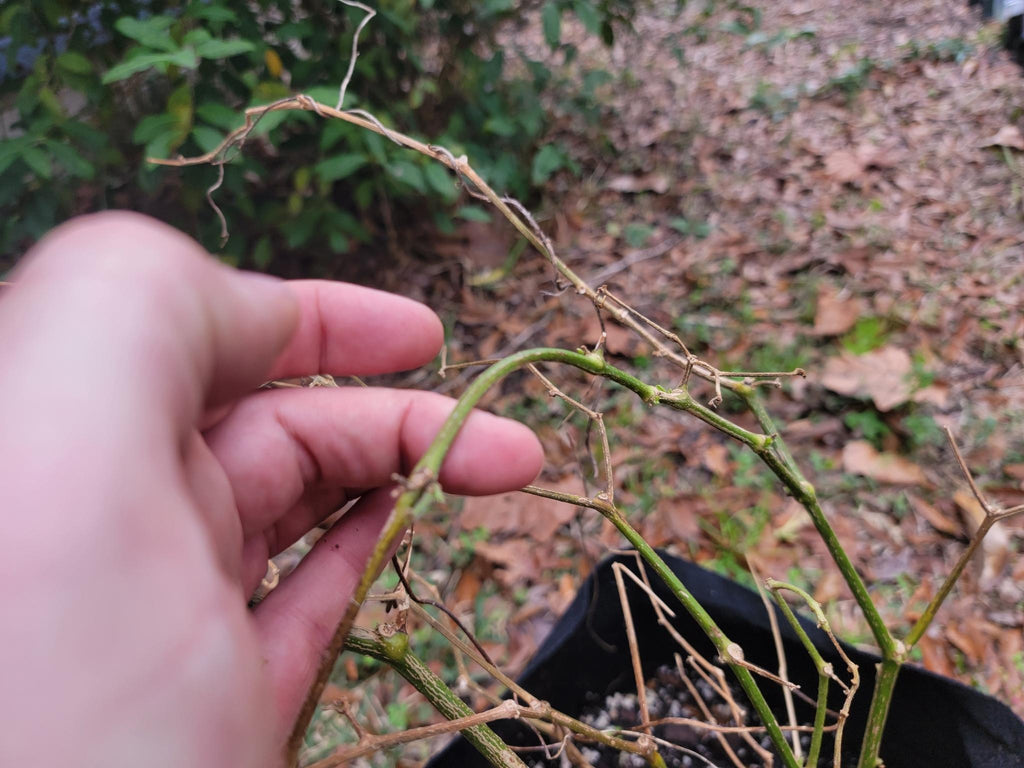
Our gardens are waking up, albeit slowly, and it’s time to get excited about spring! While we’re moving into the warmer months, it’s time to take a moment and assess where our gardens are at right now. Cleaning up our spaces, amending our soil, and getting seeds started are all good projects for this time of the year, and getting them done now can make things much easier when planting time comes. However, inspecting your garden in late winter/early spring often leads to a tricky question: is a plant dead, or just dormant from the winter? It can be difficult to tell at first glance, but it’s important to determine if a plant has died and needs to be replaced or if it’s just still dormant and sleeping off the winter. So how do you tell if a plant is dead or just dormant? Turns out there are a couple of different techniques you can use, so let’s dig in!
Let’s start with a quick overview of how plant dormancy works. There are two different types of dormancy for plants: predictive dormancy is a controlled seasonal process, when a plant goes into a dormancy state when the temperature starts to drop and the plant “thinks” that winter is coming. Consequential dormancy, by contrast, takes place when adverse weather conditions arrive suddenly or and the plant goes dormant to protect itself. Consequential dormancy can occur if the plant undergoes some kind of stress, like a sudden lack of water, changes in nutrition, or damage. We should note that plants go dormant for good reasons, and that tricking or forcing a plant out of dormancy can cause harm to the plant or even kill it.
Dormancy in plants can look a lot like death, so how do you tell the difference? There are a couple of simple tests you can use to tell if a plant is dead or just dormant. The snap test and the scratch test are perhaps the easiest and most accessible. Take hold of a twig from the plant under inspection and bend it back sharply. Dead plants will snap, while living plants will bend due to the moist living material inside the stem or branch. The scratch test works in a similar way: use your finger nail or a sharp garden tool to scratch away a small section of the bark or outer layer of a young twig. On a dead plant, this will reveal dead, dry, brown material. On a living plant, however, you’ll see moist, green or white new growth.

Snap test: sometimes a gentle bend is all it takes
(pictured by Michael)

Scratch test: remember- scrape just a little, don't take too much. And don't accidentally cut the stem!
(pictured by Michael)
When using either the snap test or the scratch test, it’s important to avoid doing too much damage to a dormant plant, but you do want to check a few different places so that you’re not fooled by one dead limb or dry bunch of twigs. Checking the main stem of a smaller plant with a very small scratch is perhaps the most definitive, but it can damage the plant if done incorrectly so use caution and stick to twigs and limbs when in doubt.
You can use a similar test to check the roots of a plant for signs of life. The root test involves digging a bit down into the soil around a plant so you can access the roots and see if they show signs of life similar to a snap or scratch test. The root test should be done cautiously, as disturbing or damaging the roots can cause further harm particularly in outdoor plants still dealing with the winter. It’s easiest to apply the root test when re-potting a plant under warmer conditions; simply take a moment to inspect the root structure for signs of health and growth. Pay special attention to the main root, as that’s the most vital part of any root ball.
We hope you’re out working to get your gardens ready for spring. Whether it’s warm enough to start working out doors or whether you’re still watching the snow fall and perusing seed catalogs, warmer weather is coming and we’ll all be back in our gardens soon. If you have big plants for your garden this year, drop us a line and let us know. We love to hear from you!

Leave a comment